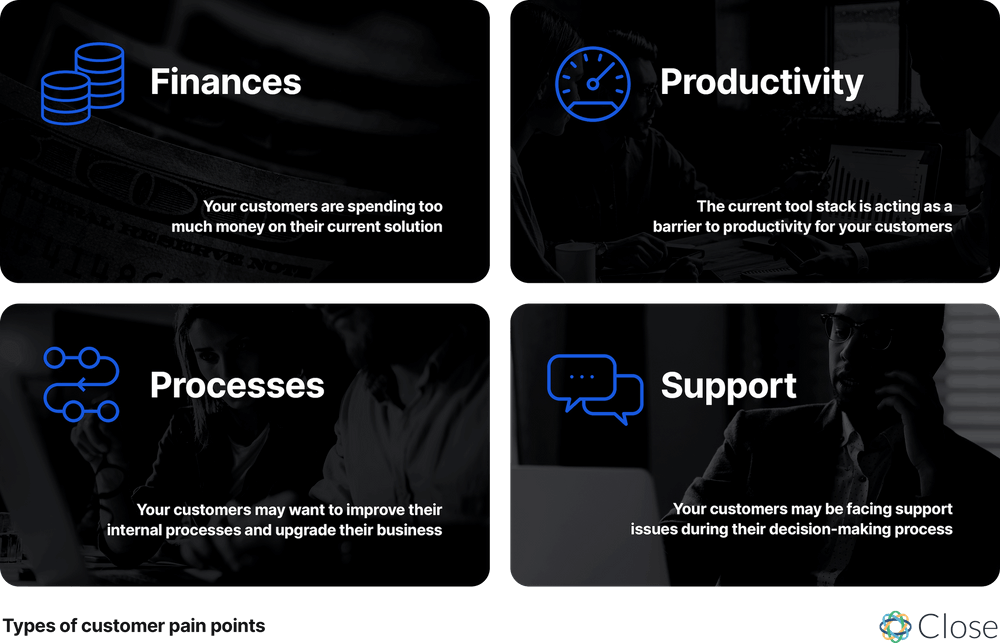Financial pain points
It is a kind of that “too expensive” answer from a consumer at some point in your communication. The reason can be a hidden add-on in the plan, a price change after the discount ends, or a crisis making their business tighten the belt.
In any case, they don’t want or can’t pay the price you set for your product.
Your goal is to define the real reason so that you can solve it. For instance, add a subscription plan or change the features list according to the group of customers’ interests and pain points.
Productivity pain pointsUsually, there are speed or quality issues. For example, since there is no visual builder in an email service, marketers had to hire a developer to craft a promo email newsletter. As a result, the campaign launch delay led to a loss of a vast part of income. Another case of losing a big deal was because a lead was in a queue while a sales rep spent time on a tire kicker.
The first case is almost at the churning stage. The second is about problem consideration. If you provide an in-time solution, you can win a customer in both cases. Use productivity customer pain points in your messaging to prove your product can ease their job.
Process pain points
It can be a tech side of the process. For instance, when a store is charged high credit card fees in Europe because they expanded into new markets without adding a local card acquiring solution. Companies could also struggle understanding customer needs because they aren’t able to properly segment customers in their analytics and data collection tools. Other process pain points arise during the sales cycle due to the need to change internal processes to match a new tool.
Carefully documenting processes and regularly revisiting them can have huge payoffs because it can allow you to shorten the sales cycle and therefore convert interested people into paying customers faster.
Support pain points
Support pain points are about communicating with a brand and resolving customers’ questions quickly and effectively. All possible issues in this process are usually caused by your agents or the tools they use. If nothing changes, customers churn.
Good to know that each professional help desk software has a support team performance report. Monitor it regularly.




